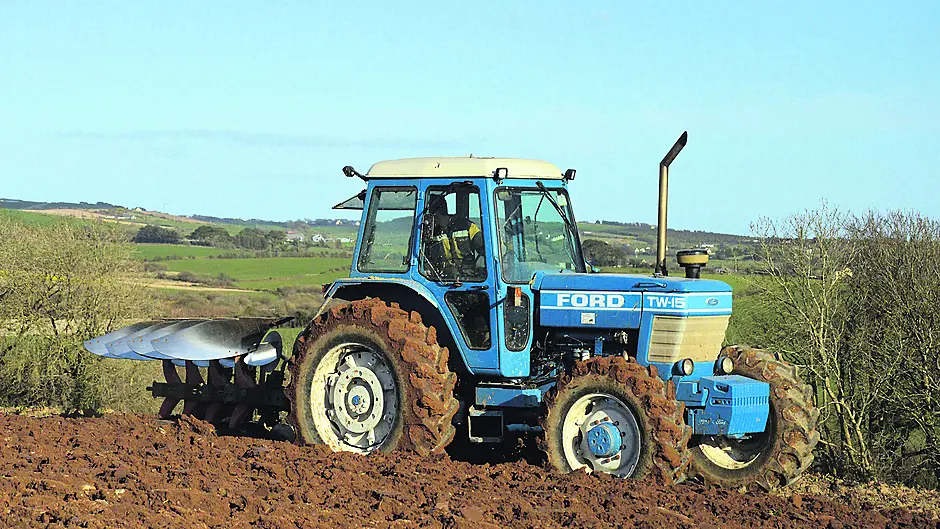Farm Classics with Peter O'Brien
IT is hard to believe that Ford’s legendary TW range of tractors was launched over 40 years ago in 1979. The TW range was bold-looking tractors with a domineering straight line stance, and more importantly, the tractors had the power to back it up. The initial line-up consisted of the TW-10, TW- 20 and TW-30, and were produced at Ford’s Antwerp production plant in Belgium.
These tractors, which were built on the proven platform of the 8700 and 9700, received a revamp in 1983 and were upgraded with a ‘5’ on the bonnet morphing the range into the TW-15, TW-25 and TW-35.
Due to its high power output and moderate size, in comparison to its long nosed siblings, the TW-15 was a huge hit in Ireland.
The tried and tested 6.6l Ford 401 engine was employed across the TW series and produced 143hp for the TW-15.
Transmissions were also uniform with a dry clutch, constant mesh 16F/4R gearbox providing the speeds.
Enclosed by a guard bar, 1-4 as well as reverse is selected on the main round handled gear stick, with Hi, Low and a park gear on the shorter second lever.
Ford’s ‘DualPower’ splitter is activated by a floor switch which is usually located to the main gear with a rocker switch.
The ‘crash’ gearbox can be unforgiving with mistimed gear changes. However, it is renowned for its durability. Weighing in at just over 6tons, the TW-15 had a lift capacity of 4.5t as well as an oil flow of 58l/min.
Fitted with Ford’s Q cab, the controls and comforts are basic but very functional. The logical dash layout features a large rpm dial, with four smaller dials placed to the left and right displaying the tractor’s vitals, along with adjustable steering wheel.
The cab boasts a large Viking Bostrom seat, but was lacking any cab-mounted work lights.
One of the key upgrades for the TW-15 was the change from an offset four-wheel drive system to an inline unit which improved the turning lock of the tractor, making it more manoeuvrable.
Engaging the four-wheel system was achieved by flicking a dash-mounted switch, whereas was previously lever-operated on previous TWs.
A variable-speed viscous fan was also fitted for more efficient cooling, as well as an assistor ram at the rear linkage.
Ford had introduced its performance monitor – which used radar to measure acreage worked – and this became an option on the TW range, fitted on top of the dash.
• Contact Peter at [email protected] or see Instagram @flashphotoscork
VITAL STATISTICS
Tractor
Ford TW-15
Horsepower
143hp
Engine
Ford 401 6.6l
Years of manufacture
1983-1986
(Generation 1)







